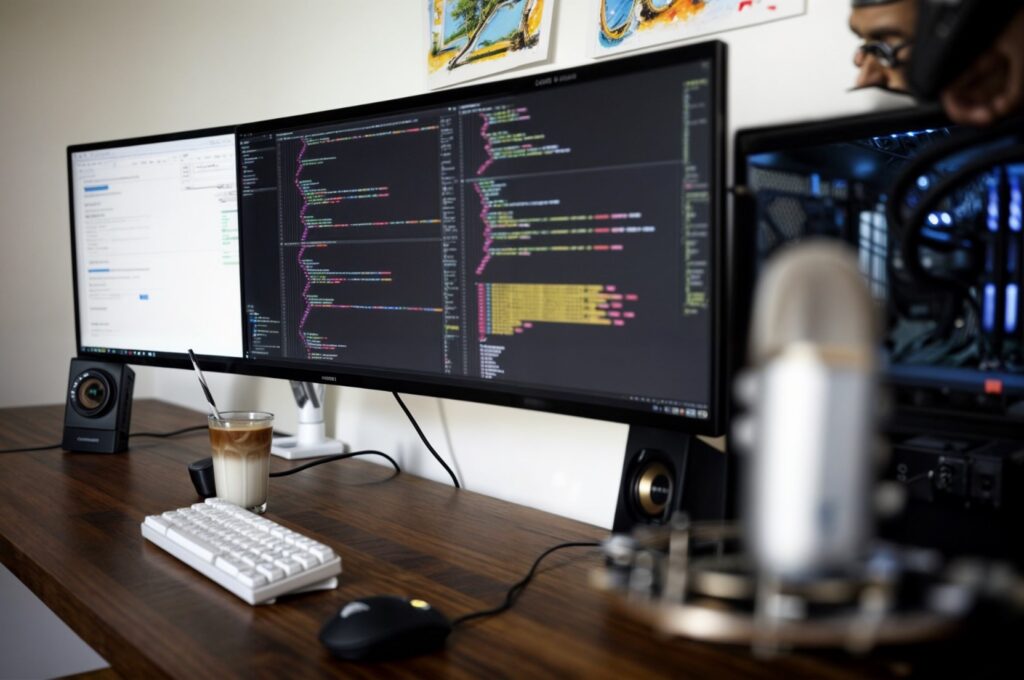Mastering the Art of Programming: A Comprehensive Guide to Coding & Solving Puzzles and Challenges
Introduction:
Programming is an ever-evolving field that demands constant learning and adaptation. It is not only about writing codes but also about solving puzzles and challenges that come with it. In this blog post, we will explore various programming concepts and present a series of puzzles and challenges designed to help you hone your coding skills and enhance your problem-solving abilities.

Understanding Programming Concepts:-
Basic Programming Concepts
Algorithm: An organized series of steps or rules crafted to efficiently address a particular problem, furnishing a precise roadmap for its resolution.
Syntax The set of rules that dictate how programs are written in a specific programming language. Proper syntax is crucial for the code to be executed correctly.
Comments: Non-executable lines in code that provide explanations or notes for developers. Comments enhance code readability and understanding.
Data Types and Variables
Data Types Define the type of data a variable can hold. Common types include integers, floats, strings, and booleans, each serving specific purposes in a program.
Variables:Containers for storing and manipulating data. Variables are declared with a data type and a name, allowing programmers to reference and modify data throughout the program.
Constants:Similar to variables, but their values don’t change during program execution. Constants are useful for storing fixed values.
Loops and Conditional Statements
Loops: Control structures that repeat a specific block of code until a condition is met. Common loop types include ‘for’ loops, ‘while’ loops, and ‘do-while’ loops.
Conditional Statements: Direct the program’s progression by responding to predetermined conditions, shaping its flow accordingly. ‘if,’ ‘else if,’ and ‘else’ statements guide the execution path, enabling dynamic decision-making.
Break and Continue Statements used within loops. ‘Break’ exits a loop prematurely, while ‘Continue’ skips the remaining code and moves to the next iteration.
Functions and Recursion:
Functions: Modular units of code that perform a specific task. Functions enhance code organization, reusability, and readability. They typically take input parameters and return a value.
Parameters and Arguments: Parameters are variables in a function’s definition, while arguments are the actual values passed into a function when it’s called.
Recursion: A programming technique where a function calls itself, often used to solve problems by breaking them into smaller, more manageable sub-problems. Requires a base case to prevent infinite recursion.

Tips and Tricks for Solving Puzzles and Challenges:
Break Down Complex Problems:
Divide and Conquer: Address complex challenges by fragmenting them into simpler, bite-sized tasks for efficient resolution. This approach simplifies the overall challenge and allows you to focus on solving one piece at a time.
Identify Patterns: Look for patterns or recurring themes within the problem. Recognizing similarities between smaller components can lead to more efficient solutions.
Use Debugging Tools
Print StatementsInsert print statements strategically to display variable values and track the flow of your code. This helps identify where unexpected behavior or errors occur.
Debugger Tools: Leverage integrated debugging tools provided by your development environment. Set breakpoints, step through code, and inspect variables to pinpoint issues.
Practice Regularly:
Consistent Practice: Regularly engage in coding challenges and puzzles to build and reinforce problem-solving skills. Consistency is key to improving your ability to approach and conquer diverse problems.
Explore Different Topics: Expand your skill set by exploring challenges from various domains. Exposure to diverse problem types enhances your adaptability and creativity in problem-solving.

FAQs and Common Challenges:
1. How do I learn programming effectively?
Start with Fundamentals: Begin by mastering basic programming concepts, syntax, and problem-solving techniques. A strong foundation will make advanced topics more accessible.
Interactive Learning: Put theoretical concepts into action by engaging in hands-on coding activities and exercises. Building real projects helps solidify understanding and boosts confidence.
Seek Resources: Utilize online tutorials, courses, and forums. Engage with a programming community for support, advice, and collaborative learning.
2.What are some popular programming languages to learn?
Python: Known for its readability and versatility, Python is excellent for beginners and widely used in various domains, including web development, data science, and artificial intelligence.
JavaScript: Essential for web development, JavaScript enables dynamic, interactive web pages. It’s a fundamental language for front-end and increasingly used on the back-end (Node.js).
Java: A versatile language employed in enterprise-level applications, mobile development (Android), and web development.
3.How can I overcome the fear of coding?
Break It Down: Tackle coding challenges incrementally. Break down complex problems into smaller tasks, making them more manageable and less intimidating.
Embrace Growth: Recognize that errors serve as valuable learning opportunities on the journey of personal development. Analyze errors, learn from them, and use debugging tools to identify and correct issues.
Build Confidence: Start with simple projects and gradually increase complexity. Celebrate small victories, and remember that continuous practice enhances confidence over time.
Conclusion:
Mastering programming concepts and solving puzzles are essential steps in becoming a skilled programmer. By consistently practicing and challenging yourself, you will develop a strong foundation in coding and be well-equipped to tackle various projects in the tech industry. Remember, learning programming is a journey, and patience and perseverance are key to success. Happy coding!
for more https://technowritters.com/index.php/2024/03/01/what-is-technology-transfer/

